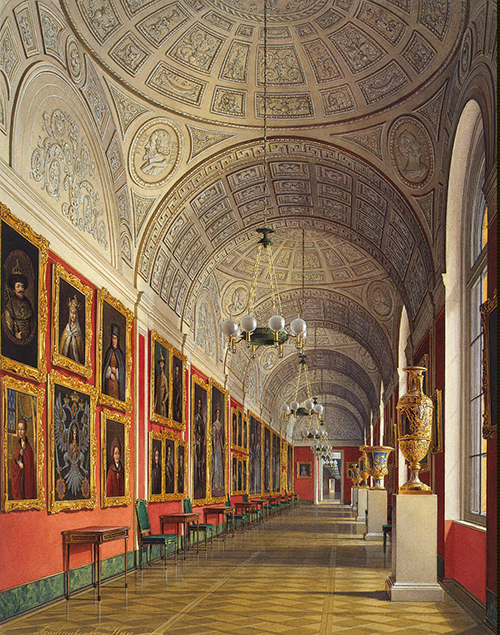
Visiting the world online museums – The Hermitage
ArtWizard 13.04.2020
We believe art is bringing consolation and joy in difficult times. As an active art supporter, ArtWizard is starting a series of articles about the world museums that you can visit online. We will present them one by one as each one of them has its own particularities and ways to exhibit works online. This week read about “The Hermitage” /Эрмитаж.
The State Hermitage Museum (in Russian Эрмитаж, ermitazh, from the French hermitage, «hermitage», «refuge of the hermit») of Saint Petersburg, Russia, is one of the largest art galleries and antique museums in the world, exhibiting vast number of artworks. Among them are paintings, graphic works, sculptures and works of applied art, archaeological finds and numismatic material.
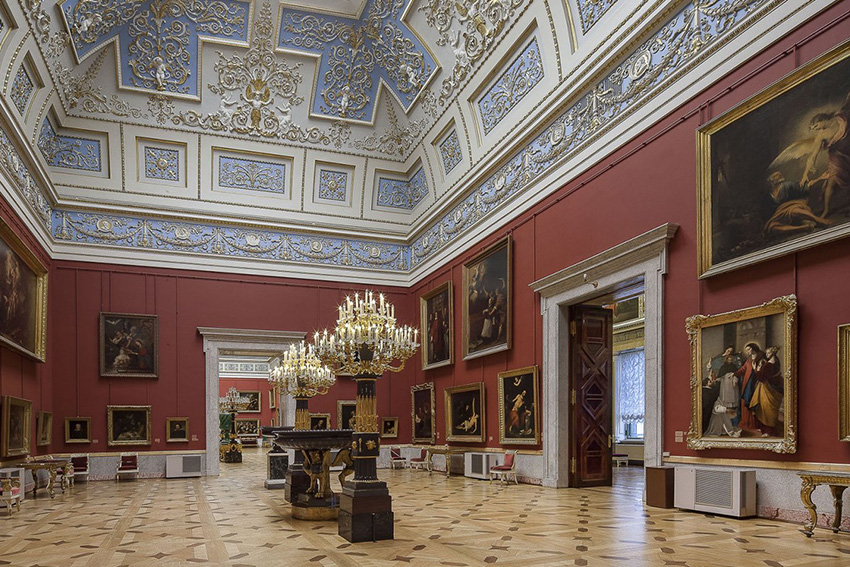
The virtual tour comprises a very wide range of halls accompanies by a magnificent view as the visitor walks along all the corridors and rooms with the possibility of very close and real possibility to all the atmosphere, furniture and ornaments of the building, the magnificent light of all halls as well as all paintings that are exhibited. The interactive scheme of the Hermitage can lead the online visitor into a specific room and place or walk him around all possible halls following the route that otherwise would be followed in a physical tour. The perfect lighting and the perfect technical solution that is used to walk allows for a very close and detailed view of each and every detail of the museum. In an information icon that appears next to each object allows to magnify and see the specific art object and read about its history.

The museum’s collection occupies a complex consisting of six buildings located on the banks of the Neva River, the most important of which is The Winter Palace, the official residence of the Russian Tsars. The rest of the architectural complex consists of five buildings, including The Menshikov Palace, the Eastern Wing of The General Staff building, The Staraya Derevnya Restoration and Storage Centre and The Museum of The Imperial Porcelain Factory.
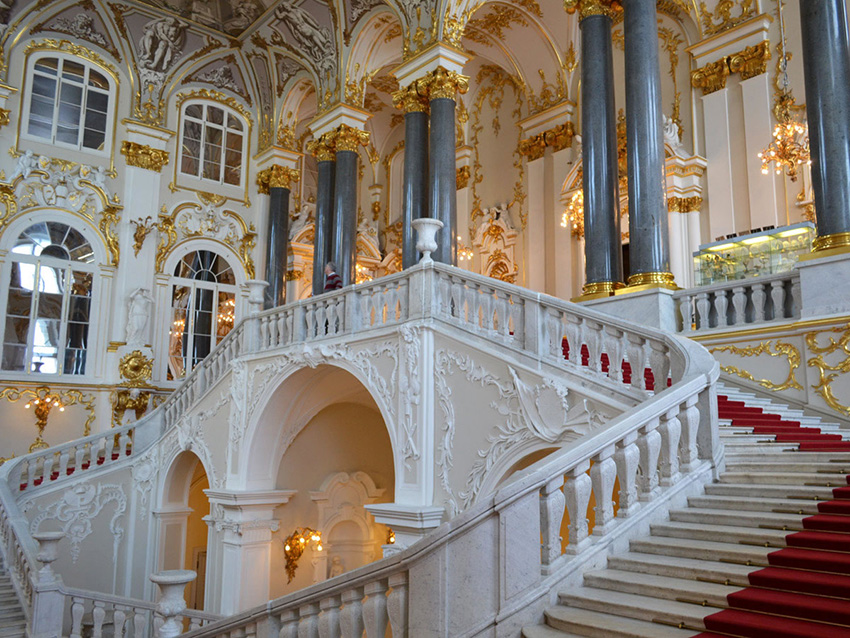
The museum was formed with the private collection that the Russian Tsars and rulers were acquiring for several centuries, and it was not until 1917 when it was declared State Museum. Its collection, made up of more than three million pieces, ranges from Roman and Greek antiquities to paintings and sculptures of the Western European, oriental art, archaeological pieces, Russian art, jewery and weapons. The Hermitage gallery is considered one of the most complete in the world.

Among the part that can be visited online is The Hermitage Theatre. It is one of the oldest in St. Petersburg and in Russia. It was constructed by the architect by the order of Catherine the Great in 1783-1789 on the site of the former Winter Palace of Peter the Great. The auditorium of the theatre was constructed to be similar to one of antiquity: semi-circular rows of seats rise from the stage of the amphitheater. The walls and colonnades are decorated in colored marble. Sculptures of Apollo and the nine muses are located in alcoves and beneath them are bas-reliefs with portraits of famous musicians and poets.
The first season of the Hermitage Theatre opened before the finishing work was completed on 16 November 1785, with a performance of the opera The Miller who was a Wizard, a Cheat and a Matchmaker (music М.М. Sokolovsky, libretto А.О. Ablesimov). On 20 January 1789, the comic opera Kosometovich, the Woeful Knight, with the libretto written by Catherine the Great had its premiere at the theatre. Under Alexander I masquerade balls were often held here. For three years from 1823 to 1826 the theatre was used as a military parade ground. Later plays were reintroduced.
An interesting chapter in the life of the theatre is associated with the end of the 19th and beginning of the 20th century. In 1894, restoration work was carried out under the supervision of the architect А. F. Kvasov. In 1902, architect Leon Benois completed the theatrical foyer in the style of the rococo. Such artists as F.I. Chaliapin, L.V. Sobinov, M.F. Kshesinskaya, А.P. Pavlova, and А.Ya. Vaganova had performed in this theatre. In 1914, a performance of the play King of the Jews was held. Its author, known by his pseudonym К.R., was the Great Prince Konstantin Konstantinovich Romanov, a poet and one of the most educated people of his times.
The dramatic events of 1917 could not but be reflected in the life of the theatre. It became the site for the Lunacharsky Workers' University, in the 1930s various concerts, ballet performances and operas were held. In 1935, the theatre ceased to operate. For many years the location was used for lectures by the State Hermitage Museum. In the early 1980s, a decision was taken to carry out full repairs and restoration of the theatre. As part of the reconstruction the theatre was provided with modern equipment. In January 1991, the Hermitage Theatre opened its doors once again to the public. Today it is one of the most popular stages in St. Petersburg.
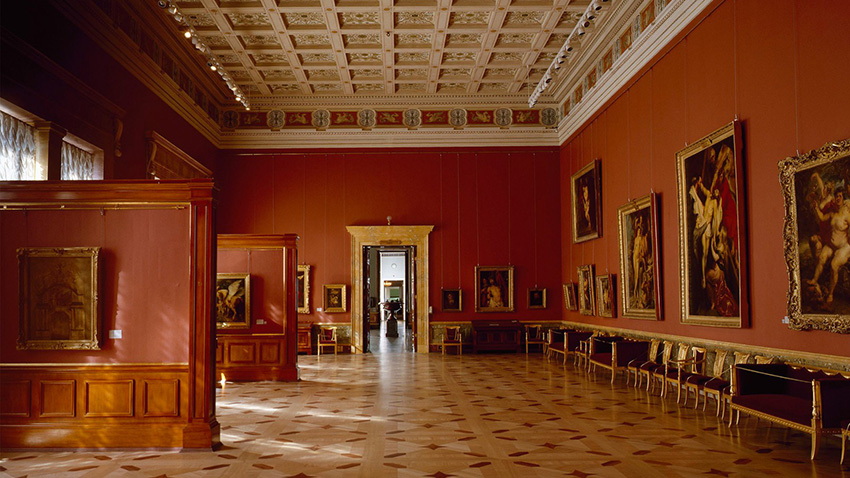
The Menshikov Palace, situated on the University Embankment of Vasilyevsky Island, was built to the order of the first governor of St Petersburg and close associate of Peter I, Alexander Menshikov. The Menshikov Palace can also be accessed online as a magnificent virtual tour. The architectural decoration of the palace is characteristic of the early 18th century. The central part of the building is crowned with an attic, while the side projections have curved pediments. The whole building ends in a high hipped roof. The bright, two-coloured walls of the building, pilasters with carved stone capitals decorating every floor, and plain window frames give the facade a smart look and were typical of Baroque architecture during the age of Peter the Great.
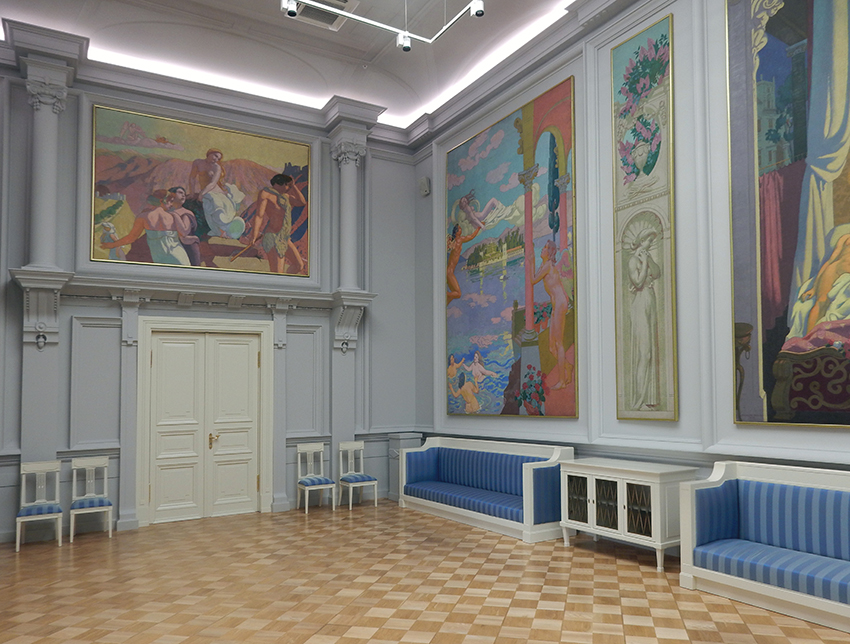
Again, among the treasures part of the online tour are also The General Staff Building s well as the Porcelain Factory. It was built in 1820-30 and reveals an architectural strictness that was characteristically Classical. The General Staff building occupies a vast space from Nevsky Prospekt to the bend of the Moika River. The main accent in the composition of the facade looking on to Palace Square is placed on the magnificent arch - the symbol of the triumph of Russia. The triumphal chariot drawn by six horses and the sculptural compositions of the arch - statues of warriors, high reliefs representing flying figures of Glory and armour - were executed according to Russian designs by Vasily Demuth-Malinovsky and Stepan Pimenov. The building's special expressiveness results from the combination of the severe and neutral facade with the monumental central part, which is lavishly decorated with sculptures, and the rhythmically arranged, well-proportioned columns of the porticos of the side wings.

On the orders of the Ministry of Culture of the Russian Federation, in 2001 the collection of the porcelain factory's museum, numbering over 30,000 items, was transferred to the administration of the State Hermitage. The history of St Petersburg's famous porcelain goes back two and a half centuries. The stages in the development of Russia's oldest porcelain factory, founded on the bank of the Neva in 1744, are reflected in the Hermitage's new display - The Museum of the Imperial Porcelain Factory that opened in December 2003 on the premises of the Imperial Porcelain Factory public joint-stock company.
The virtual tour offers the perfect view of the porcelain collections from all periods – form 1770s to the years 1990s and the visitor can have a close look at the magnificent porcelain collections – from glass to all type of porcelain objects as close as physical as it can possibly be.
The complete virtual tours of the Hermitage can take over 5 hours, however as the interactive map allows for multiple visits of particular halls and objects it can be lasting much longer.
The Hermitage complex offers one of the best virtual experiences in the world.
